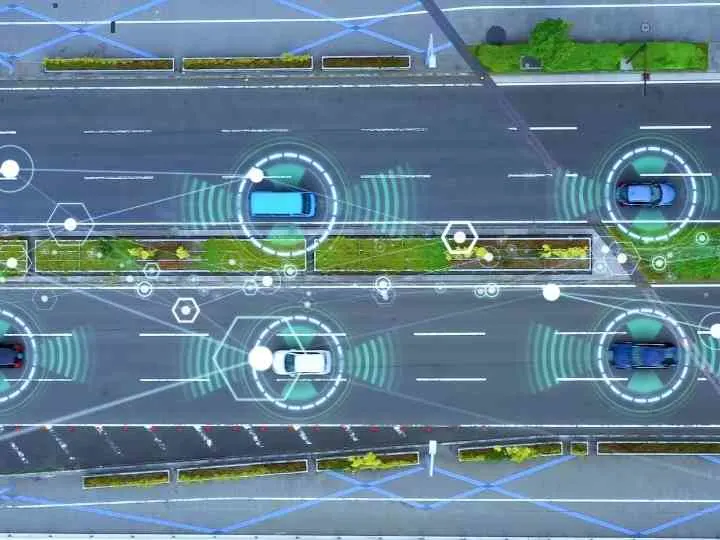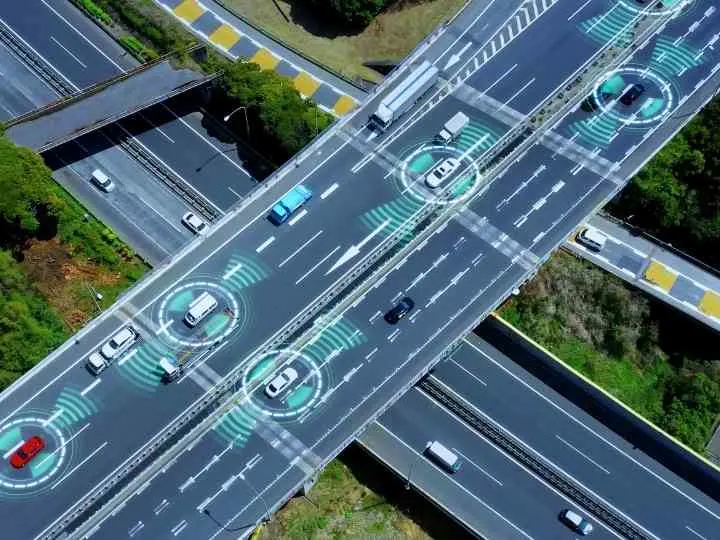We’ve all heard of semi or fully autonomous vehicles on our roads that are meant to improve our driver experiences. And one aspect of a fully autonomous car is adaptive cruise control (ACC).
If you’re wondering what it is or what it does, here’s the answer.
Adaptive cruise control is an active vehicle safety system that maintains a cruising speed and automatically varies the speed of your car to match the speed of the car in front of you. If the vehicle ahead accelerates or changes lanes your car will accelerate up to a set speed.
For example, if you come up to a car moving slower than your preset cruising speed, your car’s adaptive cruise control system will detect a decelerating or slower car ahead.
It will automatically adjust your cruising speed to match the lead car’s speed without getting dangerously close.
And that’s not all, read on to find out more on adaptive cruise control and why you should or shouldn’t have one in your car.
What Does Adaptive Cruise Control Do?
Adaptive cruise control systems are evolving with the advancement in motor vehicle technologies. Modern-day cruise control systems enable safe and comfortable driving by working in unison with other safety features present in our cars.
It not only sets your preferred cruising speed but also gives you an additional option to set your driving mode.
Comfort, Sport, and Economical are typical car driving modes that you can pair with your adaptive cruise control system.
Additionally, it sets a speed using data and information from the car’s sensors and cameras.
Information on the road curvature, speed limits, roadblocks, or construction sites influence the automatic speed that the car will cruise at that given point.
Advantages of Adaptive Cruise Control

Early cruise control systems were designed to enhance driver comfort rather than safety initially.
The driver was required to be highly vigilant since the car couldn’t respond as quickly to a change in road conditions on its own. Hence, better, more intelligent, and safer adaptive cruise control systems are needed.
Here are some of its advantages
It Reduces the Level of Stress Placed on the Driver
While driving for long distances, the ACC eliminates the need for the driver to always be on the steering wheel and throttle.
Keeping the foot on the gas pedal for extended periods is unhealthy and very uncomfortable, especially to drivers who aren’t accustomed to long-distance driving. With ACC, you’ll be able to cruise while you relax and then deactivate it if you wish to take control of the wheel.
A driver can concentrate more on the traffic and act if they feel that they’re in a situation whereby it’s best if they take over the driving from the ACC.
It Supports Driving at a Safe Distance Between Cars
Driving too close to some drivers might intimidate them, causing them to misbehave.
If a driver feels that you’re driving too close to them, they might be tempted to accelerate or drive even slower.
Reduces Chances of Rear-End Collisions
Rear-end collisions will become a thing of the past if more vehicles on the road will adopt the adaptive cruise control system. When you’ve set the cruising distance between you and the car ahead, it’s the car’s task to brake or alert you that you’re closing in on the lead car.
You’ll then act accordingly to avoid hitting the lead car’s rear.
It Improves Traffic Flow in Cities
The presence of adaptive cruise control in as much as half of the vehicles on the road will improve traffic in cities.
In addition to other traffic flow systems on our roads, maintaining a safe and constant distance between cars eases traffic flow.
Improves Driving Experience
Most drivers, especially when tired, find it difficult cruising at highway speeds. They end up creeping up too close to other cars or drifting too far back that they force other drivers to change lanes to avoid collisions.
The car will cruise at your set speed and adjust according to the road conditions and speed limits with adaptive cruise control.
Disadvantages of Adaptive Cruise Control
Like all evolving technologies, we haven’t had perfect adaptive cruise control yet. There’s room for improvement as the world slowly adapts to safer semi and fully autonomous vehicles.
Additionally, adaptive cruise control improves driver safety and driving experience, but it has some significant drawbacks.
Some of these drawbacks result from human error and some from road conditions. Nevertheless, you need to be aware of the following drawbacks of adaptive cruise control systems.
- It’s easier to zone off or get distracted while on the road
- It’s very inappropriate to drive with adaptive cruise control in bad weather
- Increased chances of overspeeding as you need to adjust your speed to drive within the speed limits
What Is the Difference Between Cruise Control and Adaptive Cruise Control?

Cruise Control
It’s a vehicle system that enables a car to maintain a reasonably constant speed with little or no human interference. The system can take over the car’s throttle, acceleration, and speed once the driver activates it and sets the speed to the desired level.
It’s a technology that has lasted over 70 years, and with the ever-growing road traffic, there was a need for better navigation technology.
Engineers and drivers noted that the cruise control failed massively in detecting road conditions ahead or stopping a vehicle in an emergency.
There was a need for a system that works well in both a highway and city traffic setting, a system that could correctly appreciate the vehicle’s speed ahead.
Adaptive Cruise Control
It’s a more advanced and safer version of cruise control technology.
Adaptive cruise control is not only more hands-free compared to cruise control, but it’s safer on the road. It will match the car’s speed ahead of you as long as it’s within the speed limit that you’ve set.
Also, it maintains a safe distance behind the car ahead. You can set the following distance in meters or seconds as the system allows you to set the distance between the lead car and your car.
Is Adaptive Cruise Control Bad for Your Car?
No. Adaptive cruise control is a meaningful and resourceful update to any vehicle. Allowing the car to take over most of the braking and acceleration while on the road is crucial in prolonging its lifespan.
Unlike cruise control, adaptive cruise control allows a car to study the road conditions and “adapt” accordingly.
However, some adaptive cruise control systems don’t offer the best driving experience. If your ACC is designed in a way that allows for irregular or aggressive braking and acceleration, it may wear down the brake disks quicker.
Also, your car doesn’t have the vision and judgment of a human being and will fail to notice sharp turns or water puddles in time.
How Do I Know if My Vehicle Has Adaptive Cruise Control?
Consult your dealership or car manufacturer to determine if the car has adaptive cruise control features.
Most major car brands such as Chevrolet, Mercedes-Benz, Hyundai, Kia, Toyota, Porsche, Audi, BMW, Ford, Lincoln, Nissan, Infiniti, Dodge, Jeep, Volkswagen, etc. have the ACC feature.
Furthermore, since adaptive cruise control systems are partnered with other driver-assist modes, I’d recommend that you take time to find the car that suits you best.
When Should You Use Adaptive Cruise Control?
Adaptive cruise control is an excellent safety and comfort feature in most vehicles, especially with the need for more autonomous vehicles. But does it mean that it should replace human effort when driving?
No. We can’t use adaptive cruise control in certain conditions that make the road unpredictable or hinder the car sensors from normal functioning.
Listed below are the best times when you should use adaptive cruise control
- When the road traffic is minimal
- You’re alert and fully aware of what’s transpiring on the road
- When traveling in good weather whereby you won’t struggle to control the car on your own
- The road conditions are favorable and on a relatively flat surface
When to Avoid Using Adaptive Cruise Control
Adaptive cruise control isn’t as fool-proof as some car companies and dealerships may lead you to believe. Here are some situations whereby it’s safer to avoid using adaptive cruise control
When the Weather Conditions Are Unfavorable
Unfavorable weather conditions include stormy, exceedingly dusty, or foggy conditions that hinder the working of the sensors.
If the sensors are partially blocked, or the signals are damped due to external interference, your car might misjudge the road and the traffic.
In Unpredictable Road Conditions
Your adaptive cruise control enabled car may not stop in time if the car ahead stops suddenly.
You need to be fully alert to hit the brakes and take over control of the vehicle. Avoid using ACC when you notice that there’s a lot of traffic or hazards on the road.
When Tired or Having Highway Hypnosis
Some long-distance drivers may suffer from highway hypnosis at one given point in their driving.
If you find that you often fail to recall some sections of your travel while in control of the wheel, avoid using adaptive cruise control.
Highway hypnosis results from mental fatigue whereby a driver is on an “auto-pilot” or in a trance-like driving state.
On Wet/ Icy Roads
Wet/ icy roads have very minimal traction, and your car will lose grip and start spinning.
Unfortunately, adaptive cruise control can’t control a spinning or out-of-control vehicle, worsening the situation.
Does Adaptive Cruise Control Use Brakes?
Absolutely. Adaptive cruise control has a brake feature that slows or stops a car when required. The system will use engine braking and disk brakes to safely and smoothly bring a car to a stop.
It will also light up the brake lights on hard deceleration, similar to when you’re manually braking.
However, while having adaptive cruise control systems, cars will need a driver to pair them with collision avoidance and lane centering assist systems.
If not, the car will only use warning systems such as lights and sounds to notify the driver to step on the brakes. Remember that some cars have emergency brake systems but lack adaptive cruise control. Don’t assume that a car has both because it has the other.
Conclusion
As much as adaptive cruise control improves your driving experience, you must be cautious and fully aware of what’s going on around you.
The system isn’t here to substitute human effort but rather to complement it.
Furthermore, if your car doesn’t have to stop and go frequently, it’s better to turn off the feature when you don’t need it. You’ll drive faster, safer, and avoid zoning out while driving.
![What Is Adaptive Cruise Control? [Full Explanation!]](https://vehicleanswers.com/wp-content/uploads/2022/04/What-Is-Adaptive-Cruise-Control-Full-Explanation-720x405.jpg.webp)